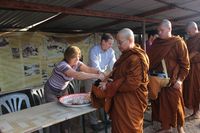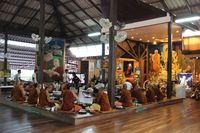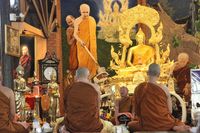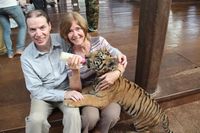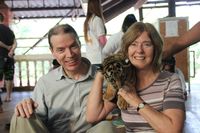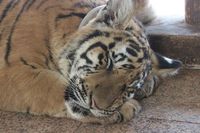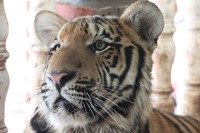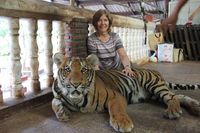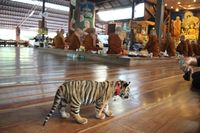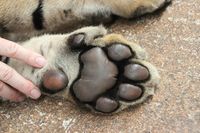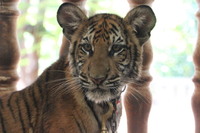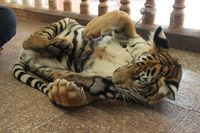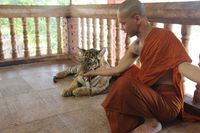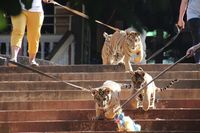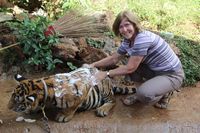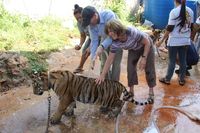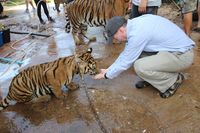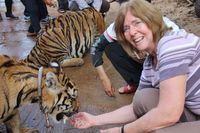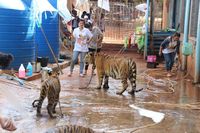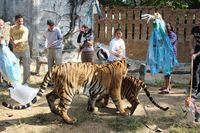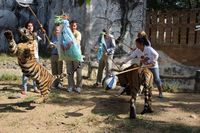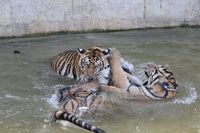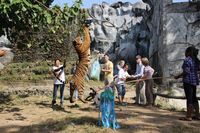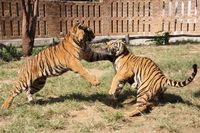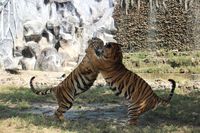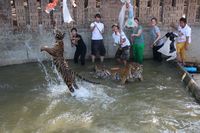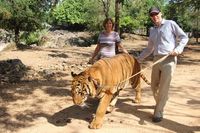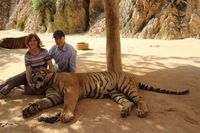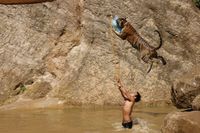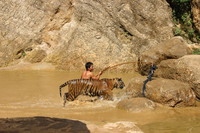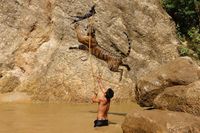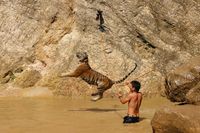Tiger Temple - Wat Pa Luangta Bua Yannasampanno
It was a very early pick up from our hotel at 4.30am, ith cushions and water provided by our driver for our comfort. We stopped off at the Bridge over the River Kwai en route to the Tiger Temple.
Established in 1994 Tiger Temple has gained a reputation as a wildlife sanctuary.To pay for the upkeep of the tigers (there
are now 122) the temple was opened up to
tourism. We did the VIP morning tour which
started by giving food to the Monks. We then went to the temple
and whilst the Monks had their morning service
we played and bottle fed tiger cubs, then we had breakfast with the
Monks. Next we walked with the young tigers,
gave them a bath, hand fed them with cooked
chicken and then exercised the young tigers
“unchained” in the small waterfall
and playground area. We then walked individually
with the large tigers down the canyon to
have our photos taken with the tiger’s
head in our lap. The final activity was watching
the “unchained” tigers exercise
and swim. It was awesome and a once in a lifetime experience.
|
|
| ||||||||
|
|||||||||
|
|
|










